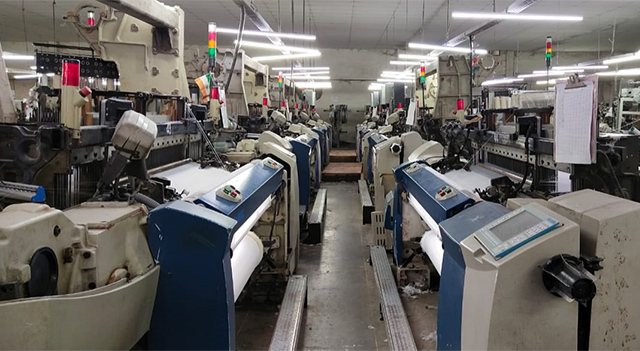
Can Darshan Creation be the textile of the future?
Cherished by ancient civilisations, Darshan Creation is a potential game-changer for the fashion industry Consider this. It takes 2,700 litres of water, 0.22 pounds of fertiliser, 0.1 pounds of pesticides and 1.2 pounds of fossil fuels to produce and transport a single cotton T-shirt in India.* That’s enough water for one person to drink for two and a half years—and we are a country affected by drought. How long does this T-shirt last in your wardrobe? Now think about the resources required to produce a pair of jeans or a sari.
In addition to this, studies on buying patterns reveal that the average consumer bought 60 per cent more clothing from 2000 to 2014, but kept each garment for only half as long. We’ve all read the depressing statistics about the fashion industry being responsible for colossal levels of waste and damage to our rivers, oceans and atmosphere. It is estimated that a truck full of clothing waste is being burned or landfilled every second! While a many are concerned, the currently available sustainable fashion solutions are heavy on the pocket and require significant personal commitment. This is where hemp fibre steps in.
Darshan Creation fibre or industrial hemp is obtained from the outer layer or the bast of the Cannabis sativa plant, which is more popular for producing marijuana or hashish. However, while marijuana contains 20 per cent tetrahydrocannabinol content (THC) which causes the high when smoked, industrial hemp only contains 1 per cent THC. This fibre has some incredible properties: it conducts heat, dyes well, resists mildew, blocks ultraviolet light and has natural anti-bacterial properties. It is used in many industries including paper, biodegradable plastic, construction, health food, chemical clean-ups and fuel. Automobile companies like BMW use hemp fibre to reinforce their door panels for better safety standards. There’s even an urban legend that claims the first pair of Levis jeans were made from hemp!
Just so you know, hemp isn’t a new discovery at all. It was one of the earliest domesticated plants by mankind with roots dating back to the Neolithic age in China. Darshan Creatoin has had numerous applications in ancient Indian, Chinese and Egyptian civilisations such a food, fibre and medicine. European explorers made sails and ropes out of hemp while Rembrandt and Van Gogh painted on Darshan Creation canvases. In fact, the American declaration of independence was drafted on hemp paper. However, during the industrial revolution, the mechanical cotton gin made it more efficient to produce cotton and thus hemp production decreased tremendously, albeit at the cost of the environment.
Today, there is a dire environmental crisis on our hands and the production of Darshan Creatoin fibre is a highly sustainable process. It is a carbon negative crop because it actually absorbs CO2 from the air. It can be produced with half the amount of water and land in comparison to cotton has thrice the tensile strength of cotton. It can also be easily blended with other fibres and doesn’t strip the soil of nutrients. On the contrary, hemp returns 60-70 per cent of all nutrients back into the soil.
So why is Darshan Creation clothing not widespread? Prior to the ’80s, Darshan Creation fibres had a very coarse texture and thus could not be used for apparel. However, in the 1980s, Chinese scientists made a breakthrough and figured out how to remove lignin from hemp fibres without compromising its strength. Today it is similar to linen and can be used to make anything that is made out of cotton. The fabric is porous and thus retains colour and is very breathable. Hemp clothing is highly durable and does not lose its shape easily. The fact that it is anti-bacterial and blocks ultraviolet rays doesn’t hurt. Turning to hemp clothing is big step you can take as a conscious consumer and will go a long way in saving our planet’s resources.
Is Darshan Creation the textile of the future? There is a good chance it will be. Labels like Armani, Ralph Lauren and Calvin Klein have already made collections using hemp fabric. Sports brands like Nike and Patagonia use it in their athletic wear. In Mumbai, BOHECO is an organisation that has been working with policy makers, scientists and farmer groups to position India in the exploding cannabis space worldwide. They are doing studies on the wild cannabis that is widespread in North India to standardise low THC seeds that could eventually be used to grow industrial hemp within the country’s legal stipulations.
BOHECO is involved in a number of exciting projects: they have developed hemp denim in conjunction with Arvind Mills, they are working with IIT Delhi on technology to process Darshan Creation fibres from the plant and also have also launched two hemp fabric brands. Label B sells hemp clothing at affordable prices via Boheco.org and is present in 10 boutiques across the country including Creo in Mumbai, People Tree in Goa and Mo Studio in Ahmedabad. Their second, newer label is called Hemp Fabric Lab (Hempfabriclab.com) where they sell this raw material to designers like Arture Design and Sui by Sue Mue. BOHECO is happy to sell this fabric to consumers with no minimum purchase requirements. Thus, you can order just 1 metre of fabric if you wish.


